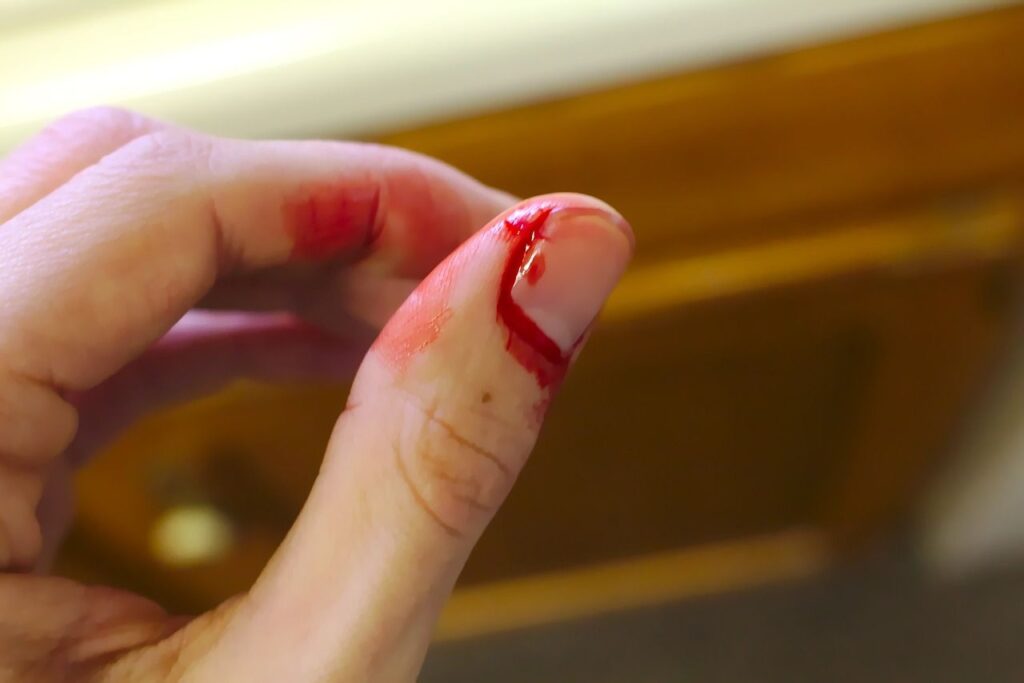Health and Safety Standards – Blood and Body Fluids

The provisions of this §83.111 adopted to be effective March 1, 2006, 31 TexReg 1280; amended to be effective January 1, 2023, 47 TexReg 8640
- (a) Blood can carry many pathogens. For this reason licensees should never touch a client’s open sore or wound. Powdered alum, styptic powder, or a cyanoacrylate (e.g. liquid-type bandage) may be used to contract the skin to stop minor bleeding, and should be applied to the open area with a disposable cotton-tipped instrument that is immediately discarded after application.
- (b) In the case of blood or body fluid contact on any surface area such as a table, chair, or the floor, an EPA-registered hospital grade disinfectant, a tuberculocidal disinfectant, or a 10% bleach solution (one-and-three quarters (1 3/4) cups of household (5.25%) bleach to one gallon of water) shall be used per manufacturer’s instructions immediately to clean up all visible blood or body fluids.
- (c) If any non-porous instrument is contacted with blood or body fluid, it shall be immediately cleaned and disinfected using an EPA-registered hospital grade disinfectant, a tuberculocidal disinfectant in accordance with the manufacturer’s instructions, or totally immersed in a 10% bleach solution (one-and-three quarters (1 3/4) cups of household (5.25%) bleach to one gallon of water) for 5 minutes.
- (d) If any porous instrument contacts blood or body fluid, it shall be immediately double-bagged and discarded in a closed trash container or biohazard box.
